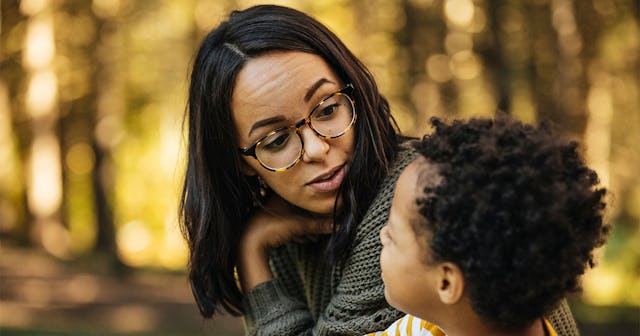Tips To Prepare Children For Tornados Without Scaring Them

I live in a part of the country where tornadoes are a yearly occurrence. Sadly, the deadly tornado that hit the Amazon facility in Edwardsville, Illinois recently is just outside of my hometown of St. Louis. These can be scary situations for children and adults.
When there is a threat of severe weather, many of us have plans in place in case we must find shelter quickly. This involves places to go and things to take with us when weather poses a serious threat. Although frightening, there are ways to better protect yourself and your family.
Have An Emergency Kit Ready
You should always have an emergency kit on hand for severe weather, such as a tornado. This can include things like portable chargers for electronic devices, flashlights with batteries, and a radio. You should also have water and nonperishable food on hand, just in case. It’s also not a bad idea to have a plan for taking important things with you when you head to shelter. If there are important pictures, jewelry of value, or a child’s special blanket, you should have them in a special place that is easy to locate in case you must head for cover.
Watch For Changes In Weather Conditions
Always be aware of weather conditions. If you notice intense winds or a green-colored sky, heavy hail, or a loud thunderous roar like a train, it is time to take things seriously. Listen to your news and weather casters. They are the experts. When they say it is time to shelter, listen. Do not try to out run a tornado in your car or sit on your porch to “watch the show” — that can quite literally be deadly.
Know Where To Go Beforehand
If weather conditions become threatening during a tornado, you want to find the proper place to go. You should have this planned ahead of time to be ready. This includes the lowest level in your home, such as a basement. You can also go to a room, or space like a closet, without windows or an interior hallway. Getting into a bathtub can also be a safer place to be than a room where glass windows can shatter due to intense windy conditions. It is also a good idea to get underneath something sturdy, like a heavy table, to help reduce head injury.
And speaking of head injuries, many experts advise locating any type of helmet you’ve got in the house – whether from sports or a bike — and putting it on your kids. “Children’s heads are relatively large compared to the rest of their body. So during a tornado, where they’re thrown by the wind or an object is thrown into them or a building collapses, it is most frequently the head that is injured,” emergency room physician Dr. Mark Baker told NPR. After a particularly damaging tornado in Birmingham, Alabama where he practices, he and other doctors partnered with a local TV station to spread awareness about helmets potentially reducing head injuries. The CDC has yet to officially recommend it, but lots of advocates are hoping that will change.
“Will it 100 percent absolutely, positively save your life? Probably not. But it’s a whole lot better than having no helmet on, and that’s a no-brainer,” safety advocate Russ Fine stated in the article.
Educate Your Children On Severe Weather
We want our kids to be ready for things like tornadoes; that is why we have drills at school so that they can remain safe while in the building. We should have the same plans in place at home. Explain to them that weather can be serious, but that they will be in the safest place in your home in case of a storm.
Preparing for severe weather, such as tornados, can be scary for kids. We reached out to the American Red Cross and they had some great advice for keeping our kids informed without the fear.
“Preparing our children for disasters starts with adults being prepared, so take advantage of non-disaster times to brush up and make a family preparedness kit, a family emergency plan and stay informed to local weather alerts. Knowing which hazards and disasters your area is prone to is important so you are equipped with knowledge to respond in the event of an emergency striking,” Katie Wilkes, a Red Cross spokesperson, told Scary Mommy.
If your child has been involved in an emergency, they may have anxiety about another incident occurring. This is normal and parents should be ready to talk to their children frankly, but with compassion.
“After experiencing an emergency, certain behaviors are common in children, such as anxiety, sleep issues, fear the emergency will happen again, a regression from certain developmental milestones and clinginess or separation anxiety with loved ones. Children may also express their feelings through play, sometimes by replaying the emergency they experienced. Know that these behaviors and feelings are common after a stressful event, and that your reassurance, love and extra affection can help soothe their anxiety,” Wilkes explained.
Remember that children often feel the most comfortable when they are with their parents, as they trust them to love and protect them. We must be patient with our children and help them to understand that it is our goal to guard them and keep them safe during tornados and all emergencies.
For parents looking for additional resources about tornado safety and a slew of other topics, there is an entire library of animated videos available to kids and parents on the Red Cross website to help prepare for a variety of emergencies.
This article was originally published on